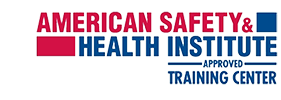
As a parent, you know how fast things can happen when children are involved – from spilled drinks and broken knick-knacks to scraped knees – a quiet moment can turn to calamity. The same goes for serious emergencies, and while it’s unthinkable to have to provide child or infant CPR, knowing what to do in the event your child stops breathing or goes into cardiac arrest can be the difference between a positive outcome and a tragedy.
To help you know how to recognize signs of an emergency as well as what to do if it happens, our CPR training center in Raleigh is walking you through the steps you need to know.
Causes of Cardiac Arrest in Infants
For babies 12 months and under, there are several complications or factors that can cause them to stop breathing or go into cardiac arrest with little to no warning, including:
- Sudden Infant Death Syndrome (SIDS)
- Suffocation
- Choking
- Drowning
- Electrocution
Preventing Medical Emergencies in Infants
To keep infants as safe as possible, it’s important to follow these preventative guidelines:
- Place your child on their back to sleep in their own crib or bassinet;
- There should be nothing in your baby’s crib or bassinet besides a fitted sheet (no blankets, bumpers, or stuffed animals);
- Keep the floor clean and clear of any small objects like buttons, coins, and pieces of paper;
- Wait until your child is between four and six months to offer solid foods such as pureed or soft foods;
- Avoid high-risk foods such as hot dogs, chunks of meat or cheese, whole grapes, nuts, popcorn, and seeds;
- Supervise mealtimes;
- Keep the door to the bathroom closed, empty mop buckets immediately, and never leave your child unsupervised in a bathtub;
- Never put a necklace or anything else around your baby’s neck;
- Remove or tie up cords on blinds or shades;
- Cover electrical outlets;
CPR Steps for Infants
If your baby is unresponsive, has stopped breathing, or has no heartbeat, taking immediate action is essential. In the event of an emergency, provide the following steps for care:
- Check for responsiveness – tap their heel for a reflex and call out to them.
- If someone is with you, have them call 911.
- Position the baby on their back and check for breathing.
- Place two fingers on the center of the baby’s chest, and pressing gently to depress the chest about one and a half inches, provide 30 chest compressions at the rate of 100 a minute (to the beat of “Staying Alive”)
- Lift the chin slightly to open the airway, taking care to avoid closing the baby’s mouth or tilting the head too far back, cover the baby’s mouth and nose with your mouth and give two gentle breaths with small puffs of air.
- Repeat the 30/2 cycle five times and call 911 if no one else has called.
- Resume CPR until help arrives or the child is breathing on their own.
Treating Choking in Infants
Choking is, unfortunately, very common in infants. As they begin exploring the world around them, one way they do this is to put things in their mouths. Pebbles, buttons, pieces of dog kibble, and parts of board games, in addition to food they may not be ready for, can lead to choking in babies, which is why it’s so important to know the signs and how to react when a baby is choking.
Signs of Choking in Infants
Choking may be either a complete or partial blockage of the airway, and signs of distress can include:
- Blue-tinted skin from lack of oxygen
- Inability to emit a strong cry or sound
- Weak cough
- Soft or whistling sounds when breathing in
- Difficulty in Breathing
If the baby is coughing hard or can cry, monitor them closely, but do not perform the choking treatment steps as that can help dislodge the object. These are only for when the baby can’t cough, cry, or is having difficulty breathing.
- Place the infant face down along your forearm, using your leg for support. Place your palm over the baby’s chest and support the jaw with your fingers, angling the head downward, lower than the body.
- Provide five quick blows to the space between the shoulder blades using the heel of your other hand.
- If the object doesn’t dislodge after five shoulder blows, support the head and turn the infant over to facing up across your legs or lap. Place two fingers in the center of the chest and give five quick chest compressions of an inch-and-a half deep.
- Roll the child back to the original position and administer five shoulder blows.
- Continue the 5 back/5 chest process until the object is clear or the infant loses consciousness.
If the infant becomes unresponsive, shout for help if there’s someone with you, and begin infant CPR. If the object is visible to you, you can try to remove it with your finger, but this is only if you can see it clearly. Otherwise, you may inadvertently push the object back further.
Schedule Your Infant CPR Training
While knowing the steps of infant CPR and first aid for choking, are important, having hands-on training from a certified professional is essential for parents. Our CPR training center is certified by the American Heart Association, and our classes are taught by experienced medical professionals and first responders. Get the training you need to step in if there’s an emergency, and schedule your infant first aid class today. To learn more, call us at (919) 639-4848 or fill out the contact form below.



